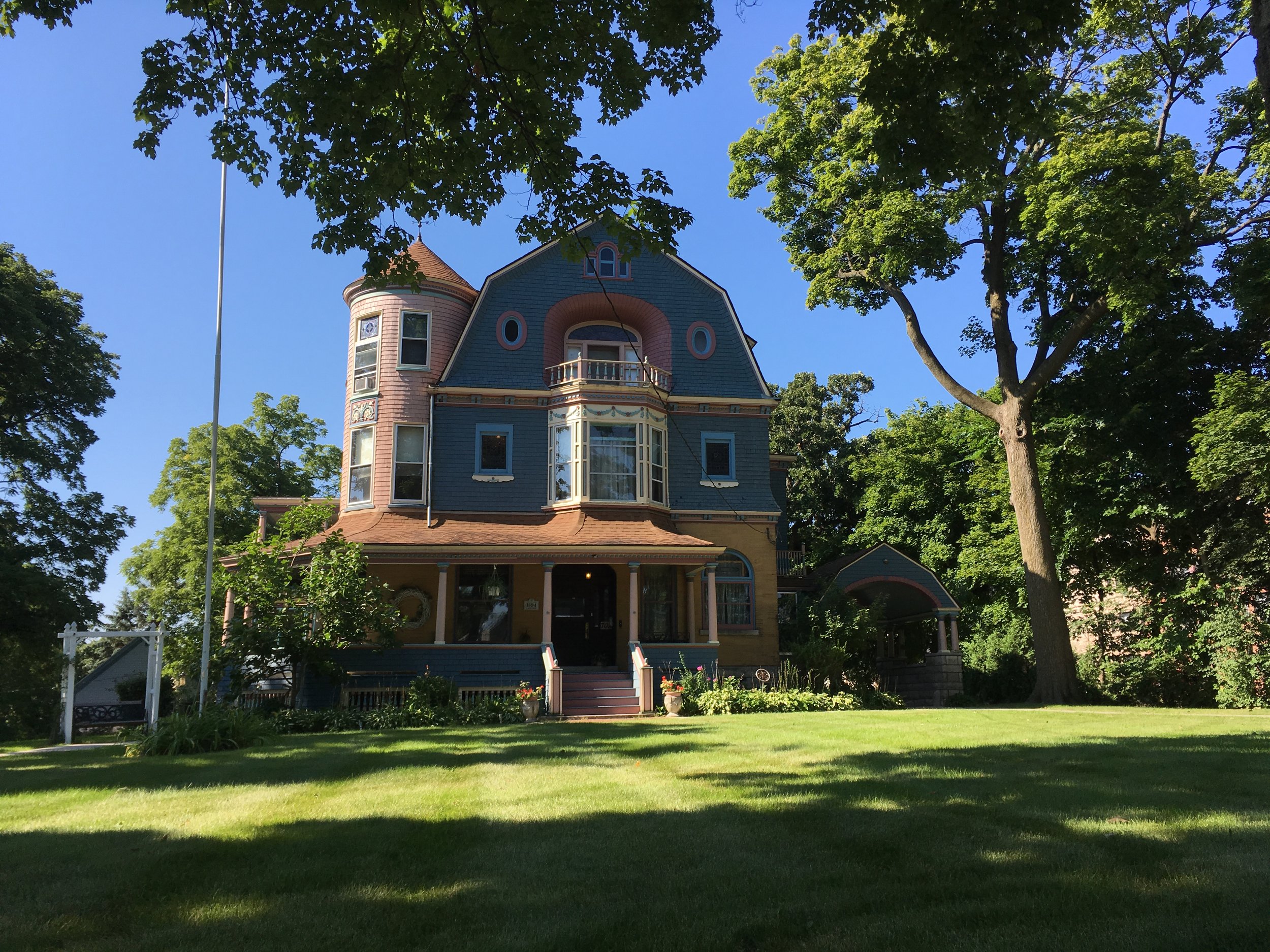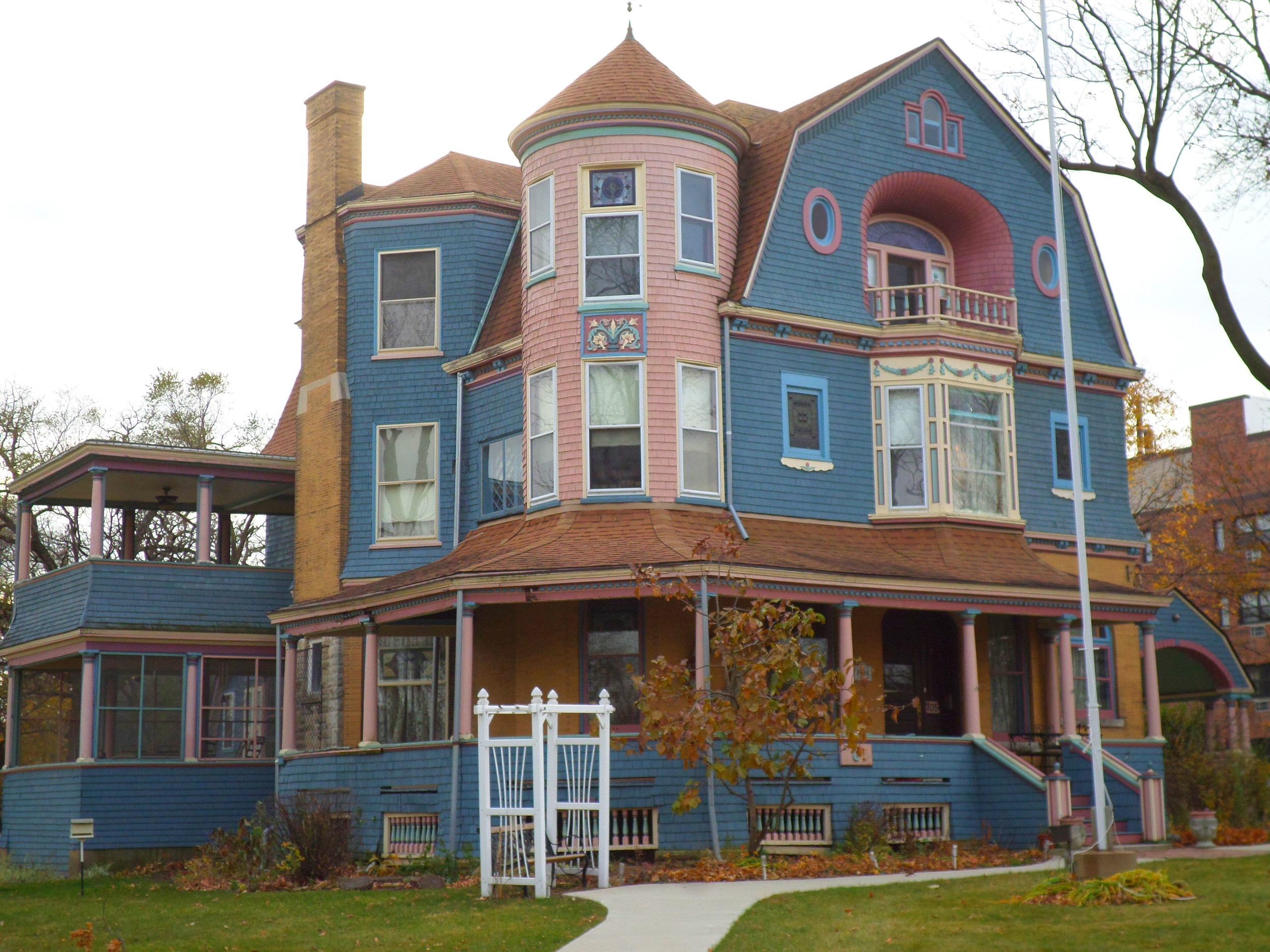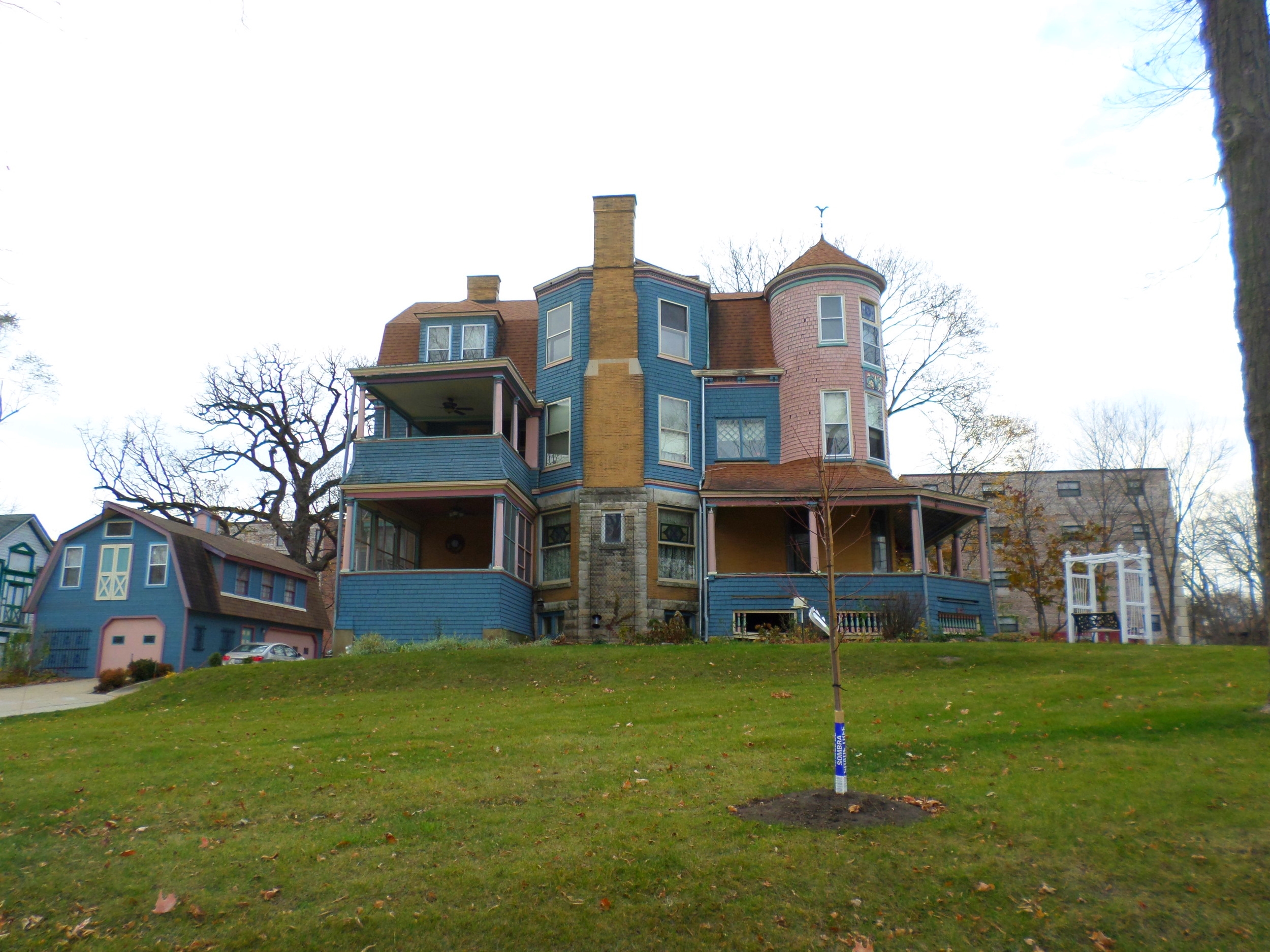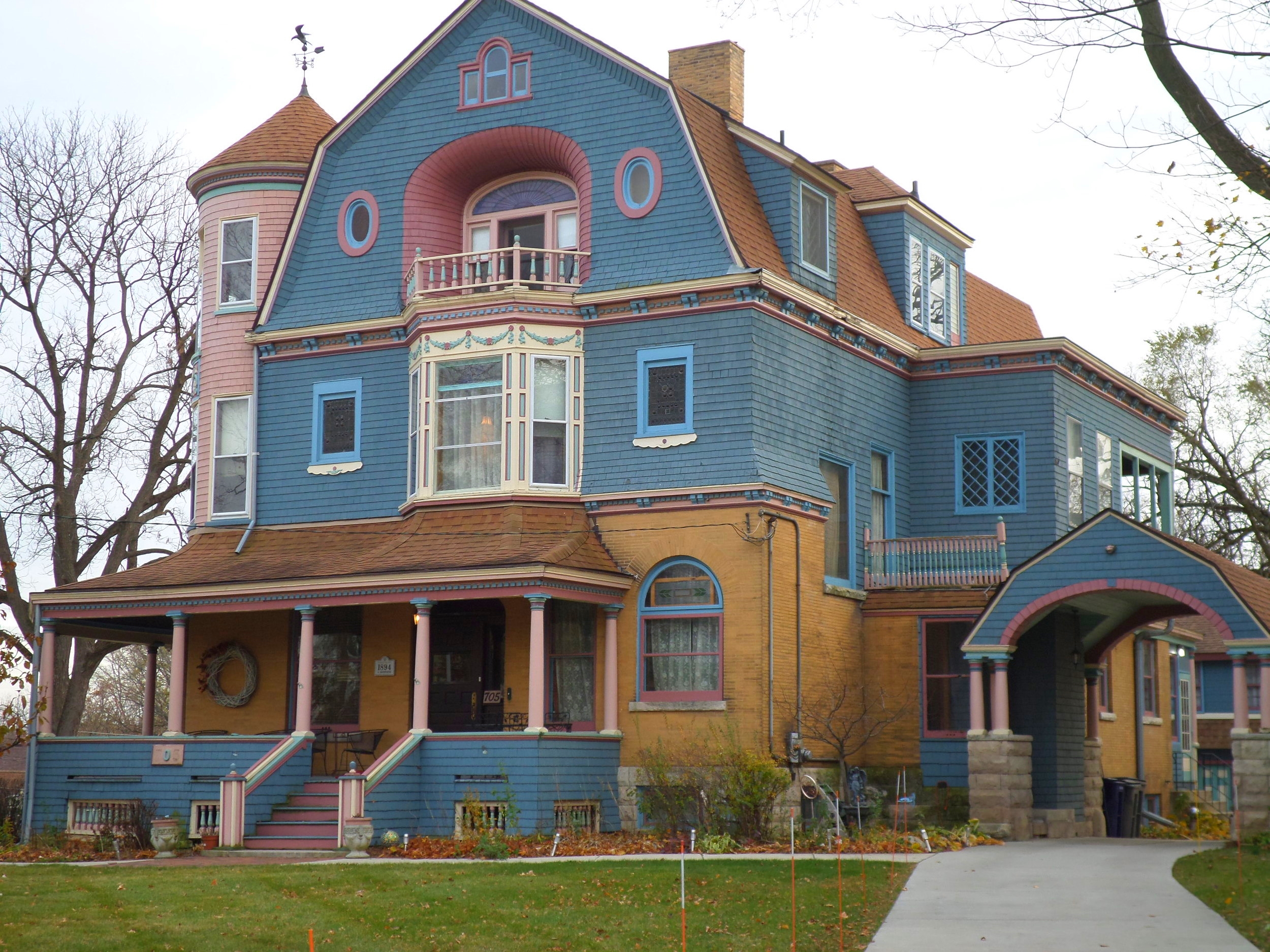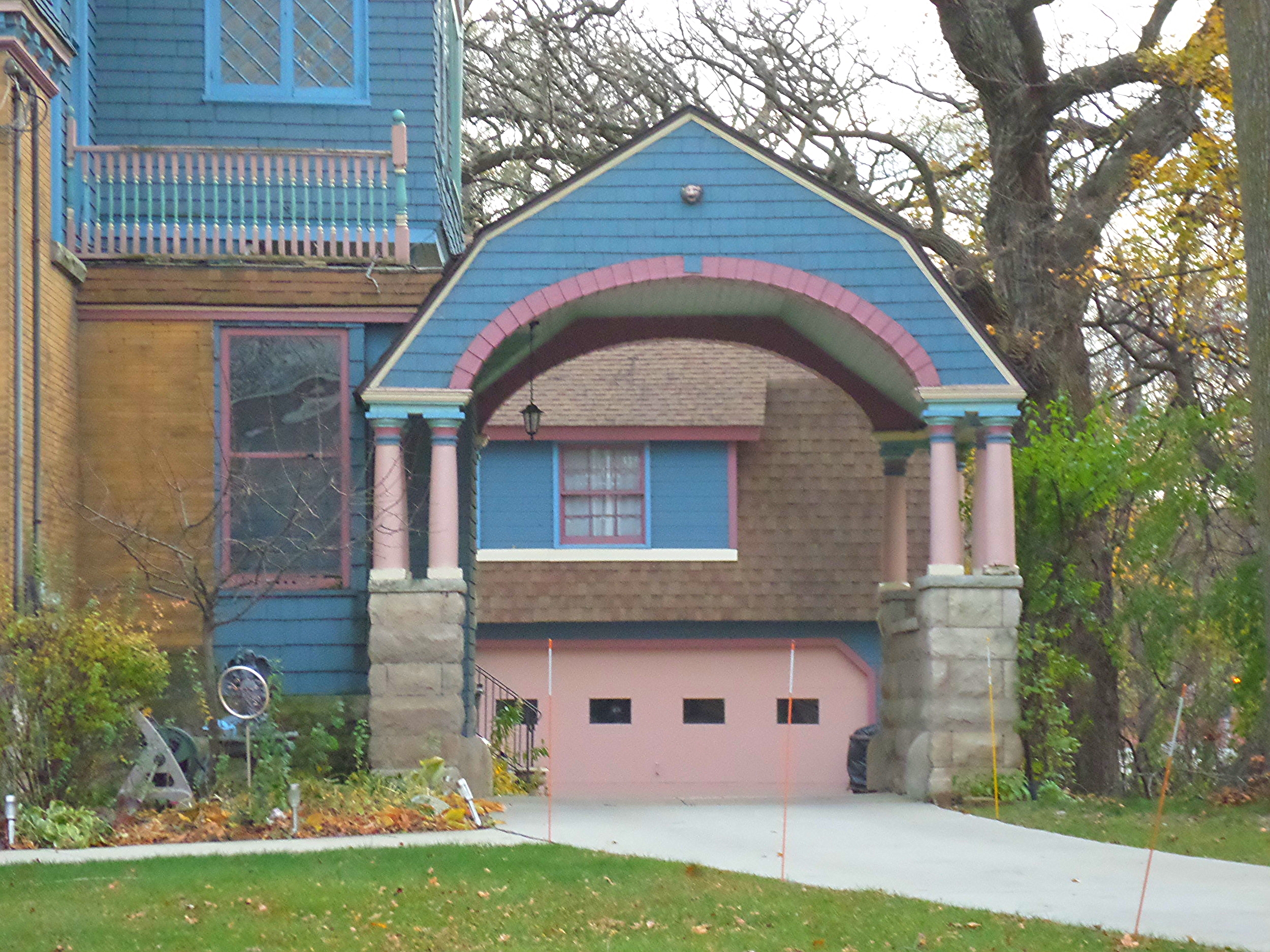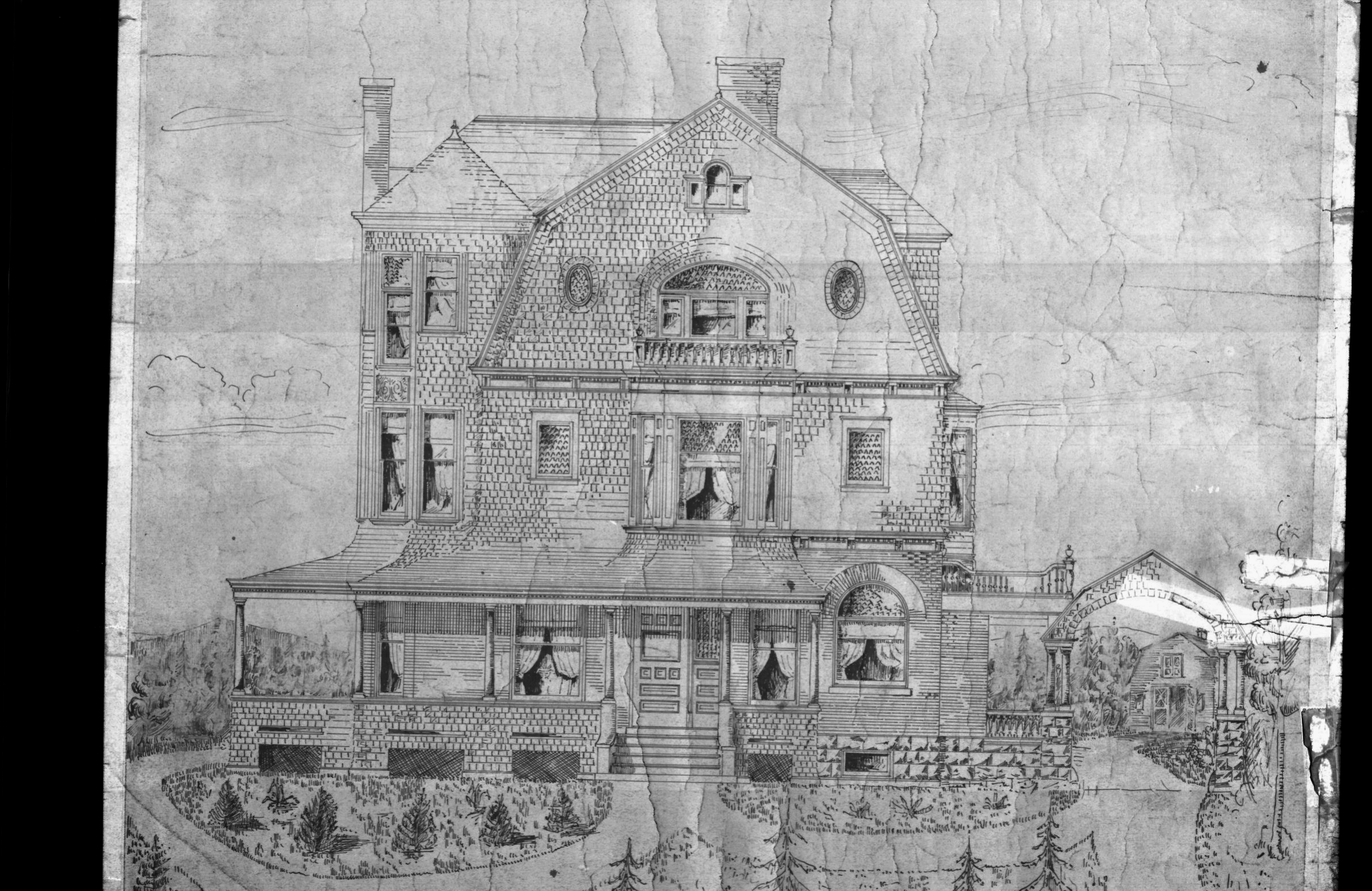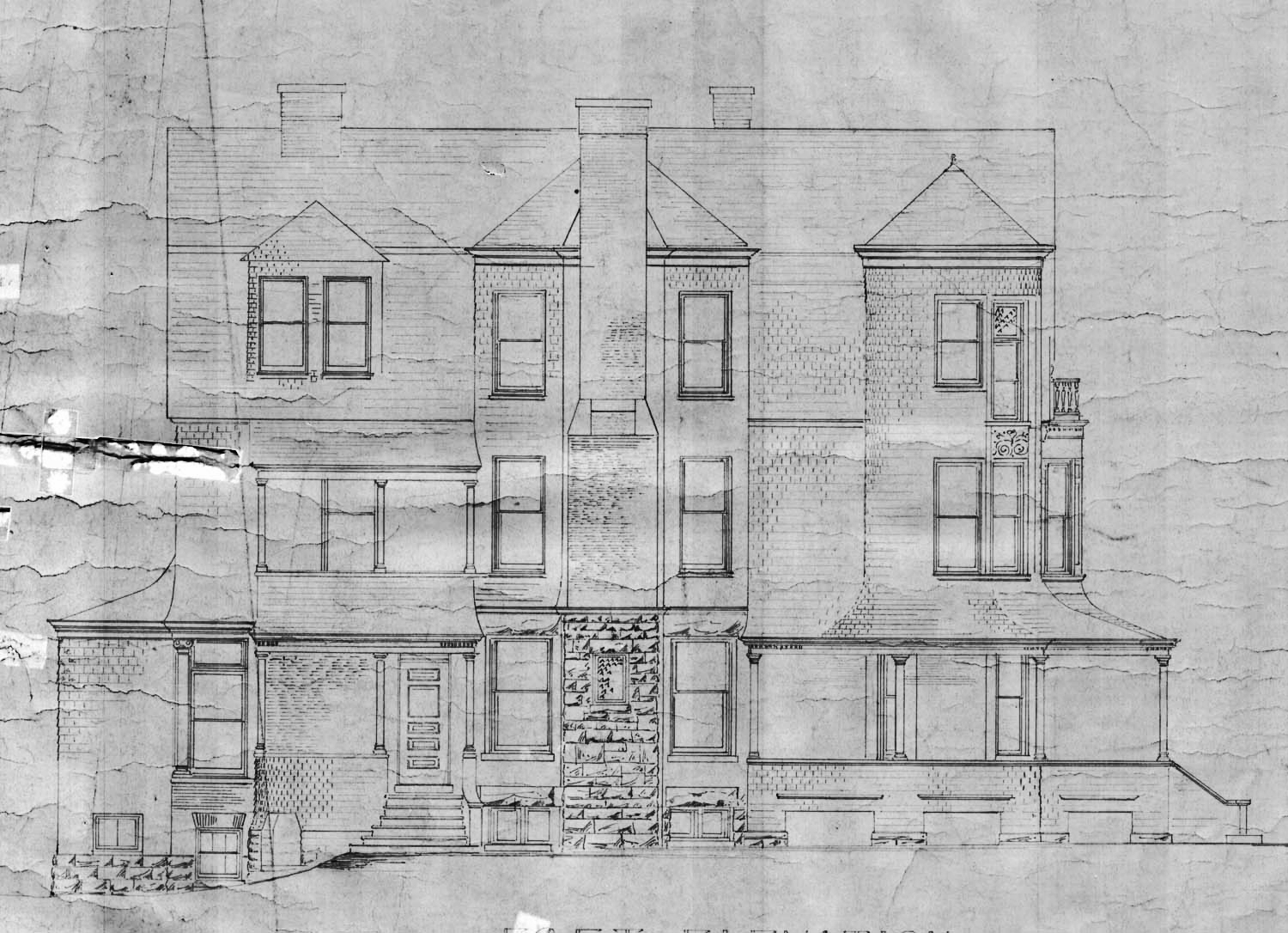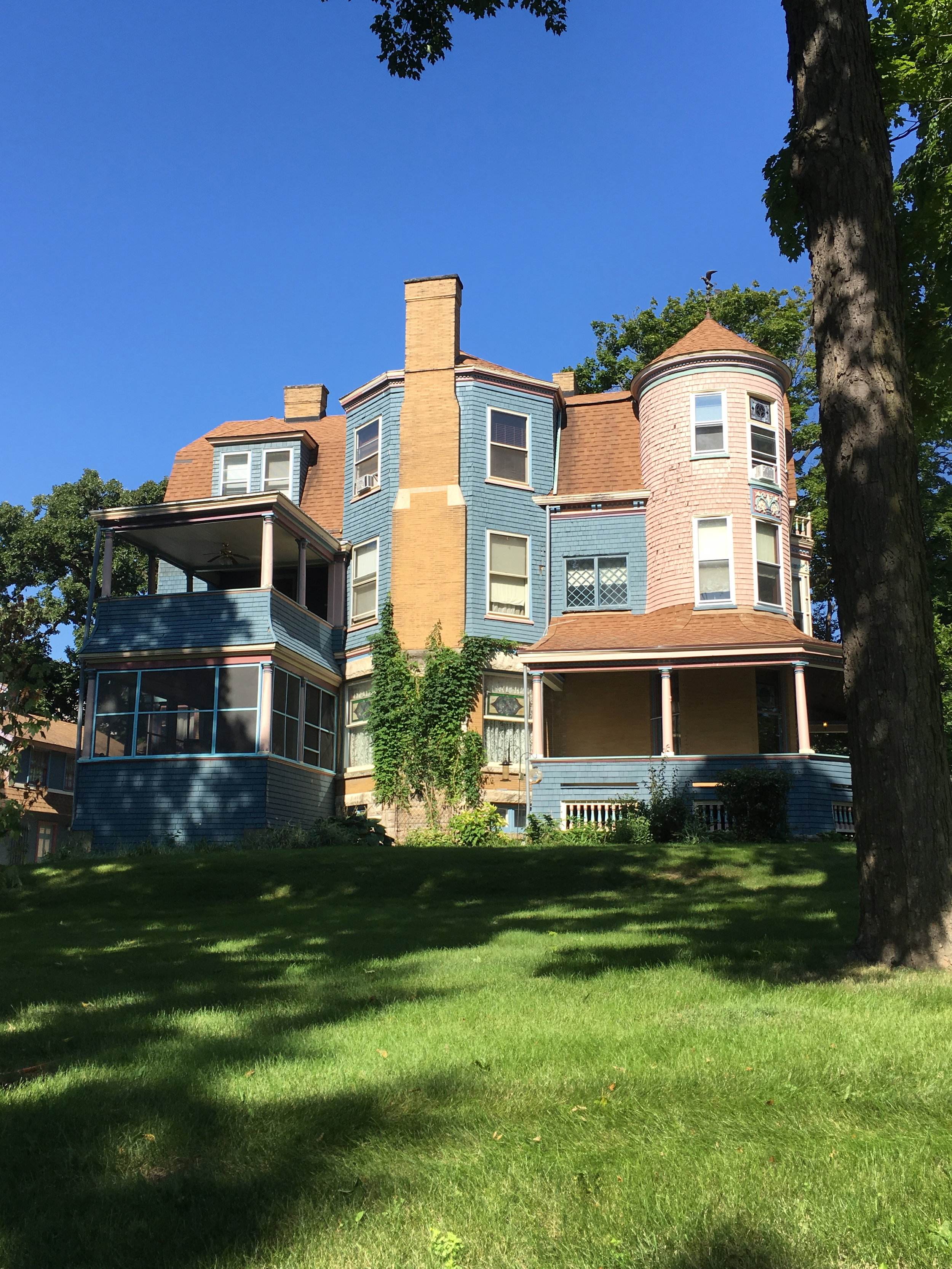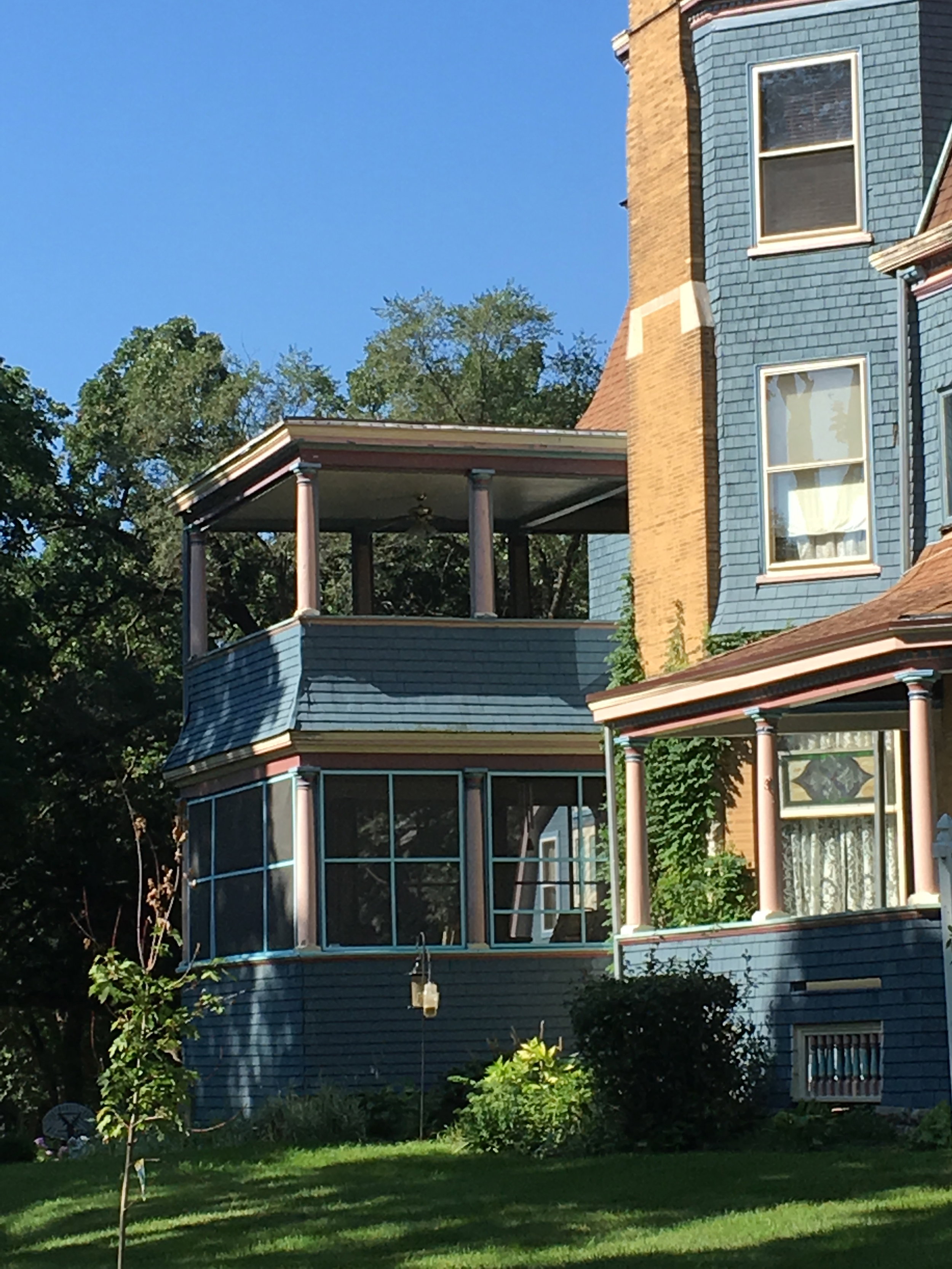705 W. HIGHLAND AVENUE
HISTORIC SIGNIFICANCE
In December 1893, the Elgin Daily Courier published a review of construction in Elgin for the year, and under "Smith Hoag's work for the season" notes that Hoag was paid $10,000 by Alfred Bosworth for "a model modern residence to be erected on Highland Avenue." One year later, the Elgin Daily Courier again posted its year in review about 705 W. Highland, an indication that the construction was ongoing. The Elgin City Directory for 1897-1898 is the first to reveal an owner at that location.
Alfred was born in 1846 to a businessman who served in the Civil War. Alfred's father switched from being a merchant to being a banker in 1876, eventually merging with First National Bank and becoming its president. When Alfred graduated from the University of Chicago, he too became heavily involved in Elgin's business and banking affairs, following in his father's footsteps. He became a cashier and eventually rose to be its president, a role he remained in until his passing in 1930.
These moves by the Bosworth family afforded them a style of living that placed them on the same street as a number of other wealthy Elginites like Finla McClure and Washington Wing. It also led to beneficial connections for their home furnishing choices. Some reports indicated that there is a chance that Bosworth had a connection with the board of the Chicago World's Fair of 1893, and that some of the pieces from the fair were reclaimed and placed in the home. In any event, their wealth is shown through the seven fireplaces, built-in wardrobes, walk-in closets, a cut glass chandelier, and even a floor bell to summon servants.
ARCHITECTURAL SIGNIFICANCE
In July of 2014, the Bosworth Mansion was designated a Local Historic Landmark. The Queen Anne style, as this house is, was at the peak of its popularity in late 1800s. Increasingly sophisticated construction technology allowed for the shape and design of houses to become more and more elaborate and individualized. Common Queen Anne features are seen through 705 W. Highland including the Palladian windows, the dentils along the full-width porch, classic columns, bay windows, the tower, and the large panes of glass bounded by smaller panes often of colored glass.
Smith Hoag was the architect of 705 W. Highland, coming to Elgin in the late 1800s. Responsible for many notable structures around town including the first Opera House, the First National Bank, the First Baptist Church, and the Washington Wing mansion, he was considered one of the best architects in the area.
TIMELINE OF PREVIOUS OWNERS
Sources: 2003 Heritage Plaque Application; Audio: TextAloud

